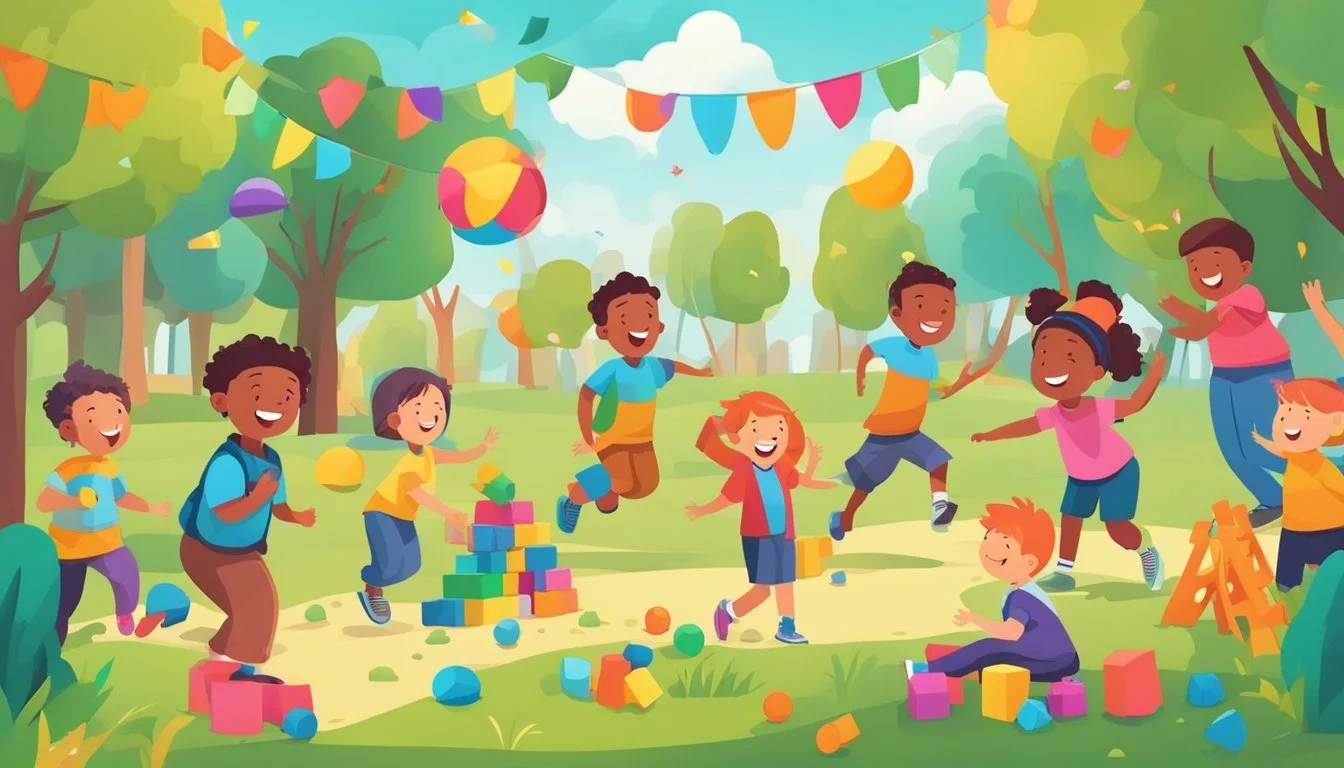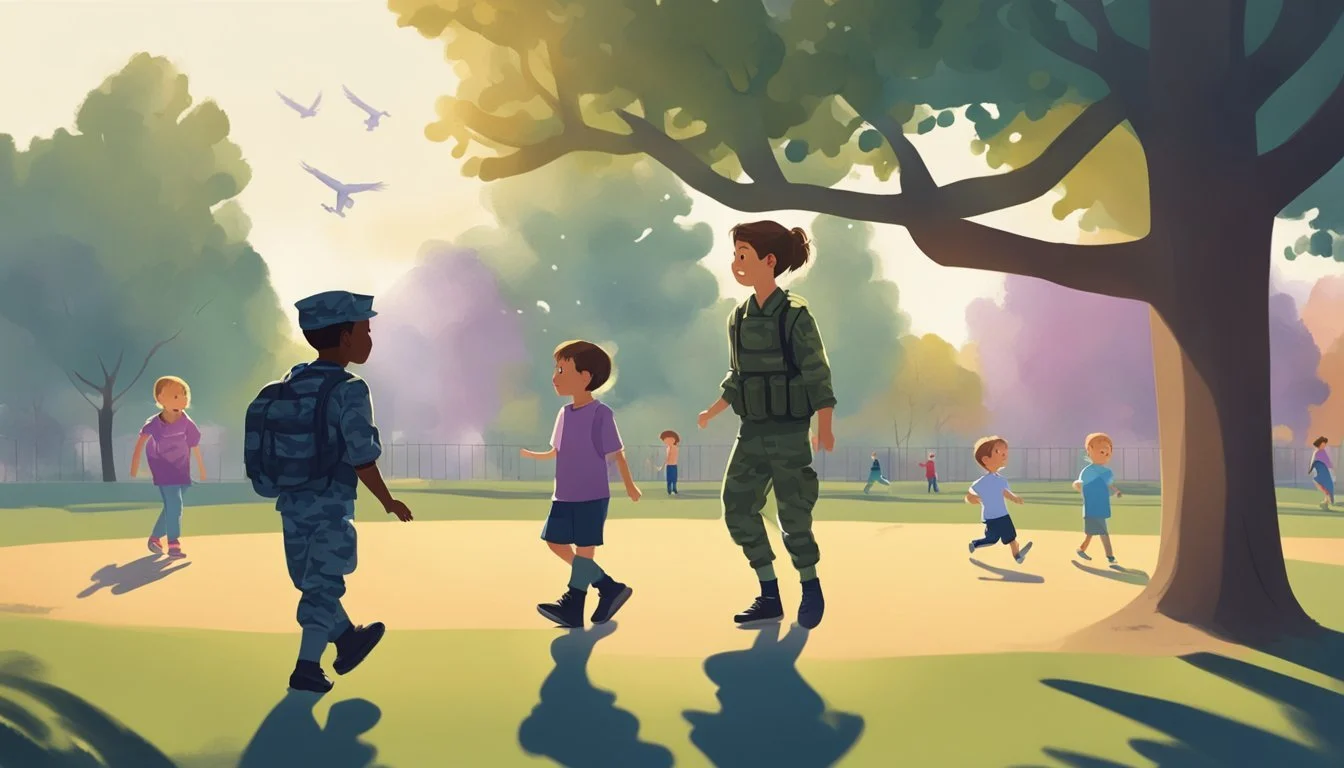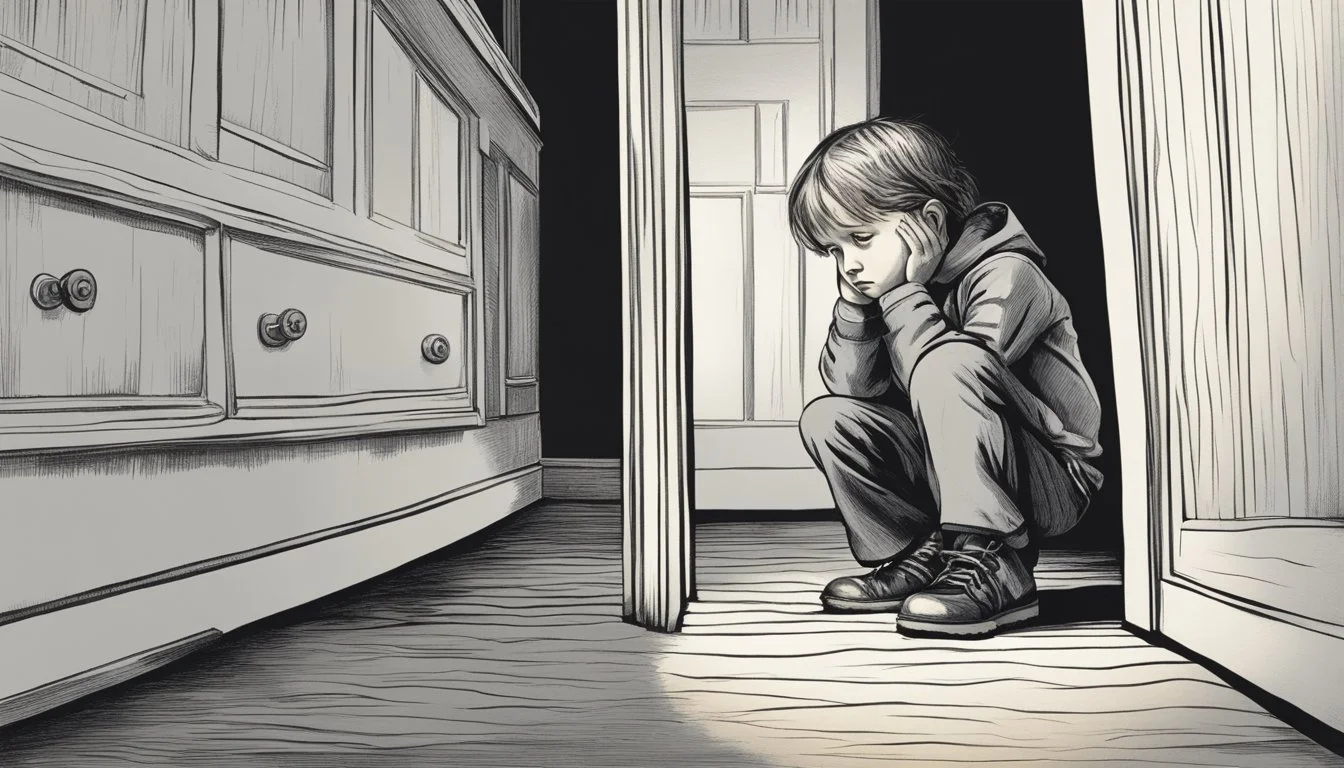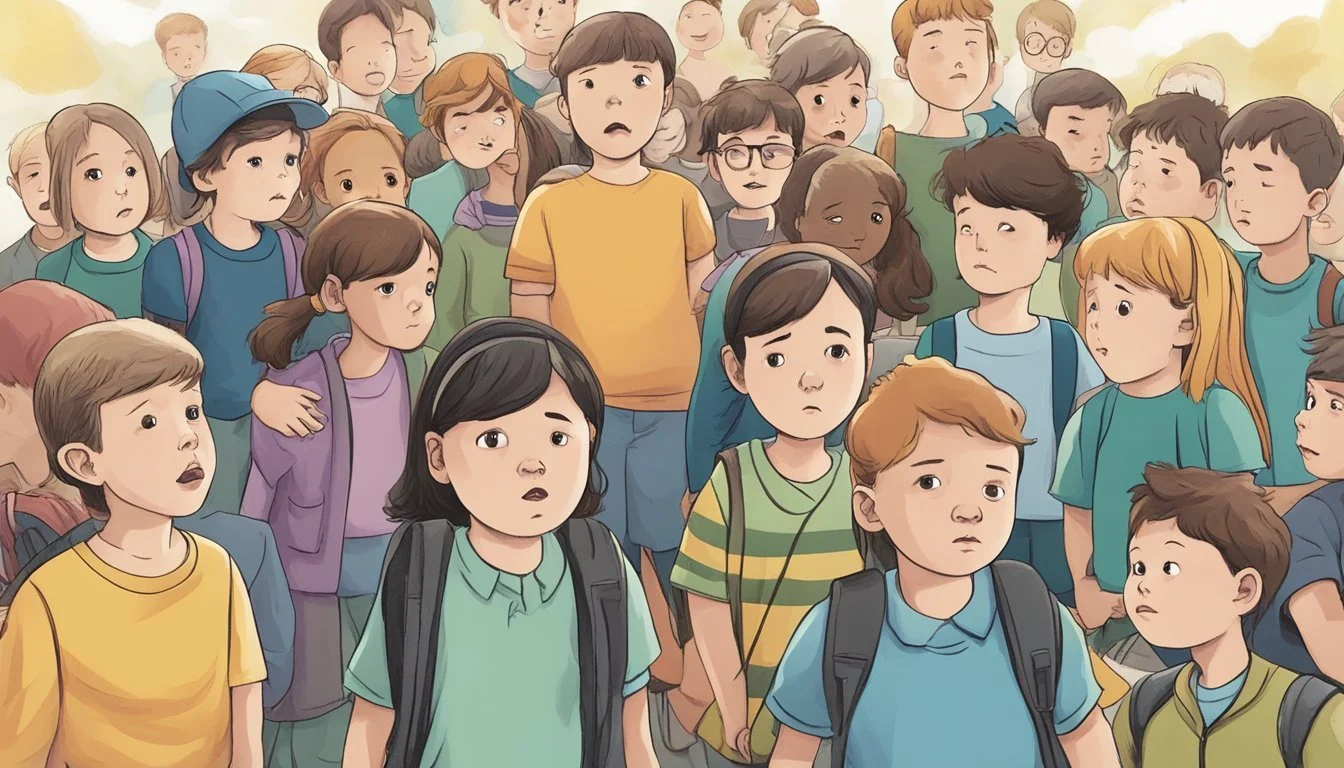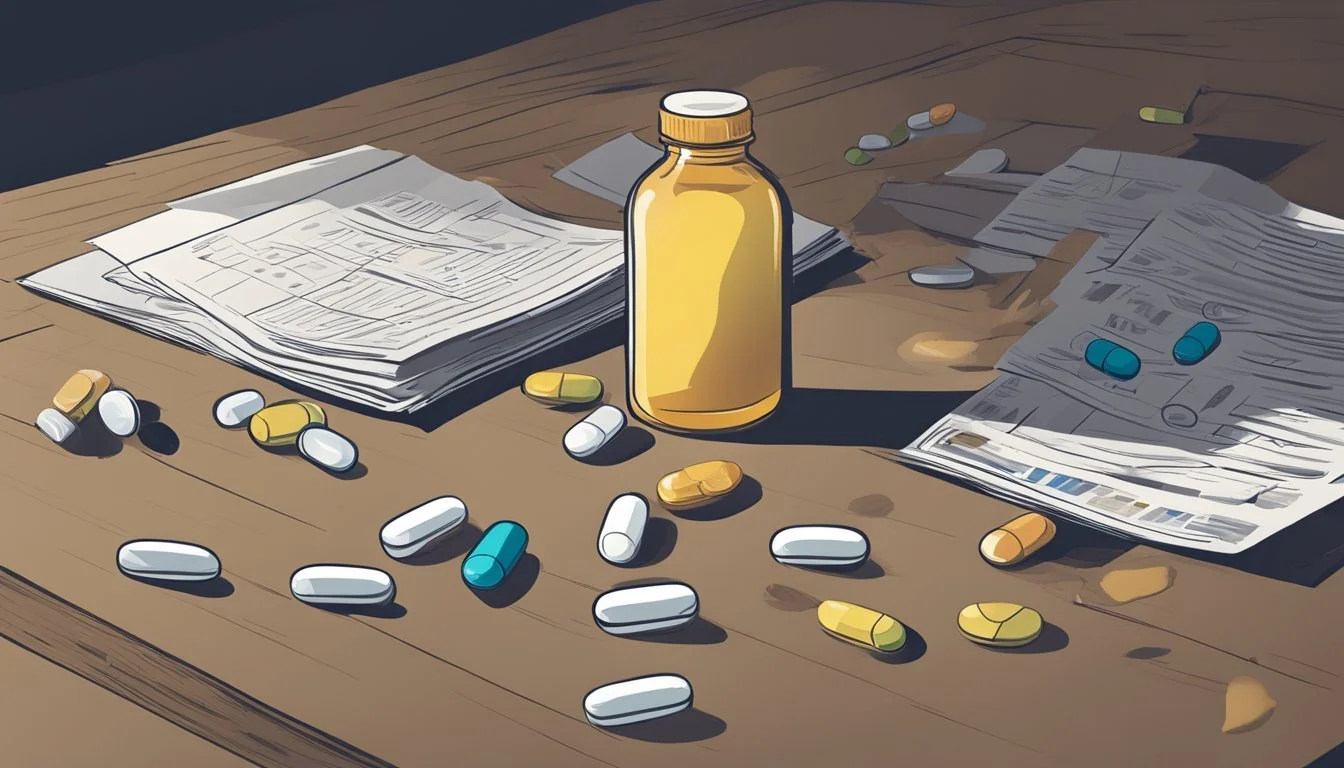9 Common Myths About PTSD in Children
Debunking Misconceptions for Better Understanding
Post-traumatic stress disorder (PTSD) in children is often misunderstood, causing various misconceptions about the condition. These myths can hinder effective recognition and treatment, making it essential to address and dispel them.
Understanding and addressing these myths about PTSD in children is crucial for providing better support and treatment. By shedding light on these misconceptions, parents, educators, and caregivers can make more informed decisions and create a supportive environment for affected children.
1) Kids don't experience PTSD.
Many believe that post-traumatic stress disorder (PTSD) is an adult-only condition, but this is untrue. Children are susceptible to PTSD just as adults are. PTSD in children can emerge after experiencing or witnessing traumatic events such as abuse, accidents, or natural disasters.
Children with PTSD often relive their trauma through disturbing thoughts or play. These thoughts may disrupt daily activities and can persist for months. This pattern demonstrates that children are deeply affected, contrary to the belief that they simply "bounce back."
Symptoms in children include nightmares, sleep problems, and difficulty with relationships. Affected children may appear overly anxious or fearful even long after the traumatic event. Prompt and adequate support can mitigate these adverse effects.
Some factors increase the risk of PTSD in children. Experiencing repeated trauma, such as ongoing abuse or violence, significantly heightens the risk of developing the disorder. For more detailed information, visit PTSD in Children.
It is crucial to acknowledge the reality of PTSD in children to ensure they receive the necessary care and support. Early intervention plays a vital role in improving outcomes for young individuals facing PTSD challenges.
2) Only soldiers get PTSD
A common myth is that post-traumatic stress disorder (PTSD) only affects soldiers. This is not true. PTSD can affect anyone who has experienced a traumatic event. Children are also susceptible to this condition.
Children might develop PTSD from various sources of trauma. These can include natural disasters, car accidents, or domestic violence. Witnessing or experiencing physical or emotional abuse can also trigger PTSD in children.
Symptoms of PTSD in children may differ from those in adults. They might include bedwetting, becoming unusually clingy with a parent, or reenacting the traumatic event through play.
Another misconception is that PTSD manifests immediately. In reality, symptoms can appear months or even years after the traumatic event.
It is vital to recognize these symptoms early. Early intervention can help manage PTSD more effectively. For further information, consider exploring resources like Health.mil's myth-busting article on PTSD.
3) PTSD is instantly recognizable.
Contrary to popular belief, PTSD is not always immediately apparent.
Symptoms can take months or even years to manifest after a traumatic event. In some cases, individuals might exhibit signs continuously, while in others, these symptoms may come and go unpredictably.
Children may struggle to express their feelings, making it challenging to identify PTSD. They might exhibit behavioral changes, such as increased irritability or withdrawal, which can be mistakenly attributed to other issues.
Nightmares, trouble concentrating, and avoiding reminders of the trauma are common symptoms, but these can be subtle and not immediately linked to PTSD. Parents and caregivers must be attentive to shifts in behavior and emotional state.
For more information on the complexity of PTSD symptoms, visit Psychology Today. Recognizing PTSD needs careful observation and understanding of the varied ways it can present in children.
4) Children with PTSD can't recover.
This myth suggests that children diagnosed with PTSD are doomed to suffer from its effects permanently. This is far from the truth. Many children with PTSD can and do make significant progress towards recovery with the right support and interventions.
Therapy plays a crucial role in helping children navigate PTSD. Treatments such as cognitive-behavioral therapy (CBT) have proven effective in reducing symptoms. CBT helps children reframe negative thoughts and develop coping strategies.
In addition to therapy, a supportive environment is essential for recovery. Encouragement from family members, teachers, and peers can create a sense of safety and stability. This support network can vastly improve the child's ability to manage and overcome PTSD symptoms.
In some cases, medication may be prescribed to help manage anxiety, depression, or other related symptoms. Medications, coupled with therapy, can offer a well-rounded approach to treatment.
It's important to note that recovery is a process. Children may experience ups and downs, but with consistent support and appropriate treatment, many can lead healthy, fulfilling lives. Dismissing the possibility of recovery does a disservice to the resilience and potential within each child. For more information, visit the article on recognizing PTSD in children.
5) PTSD symptoms are always the same.
PTSD symptoms can vary greatly among children. While some may experience intense flashbacks, others might have nightmares or difficulties concentrating. This individualized response is influenced by multiple factors like age, personality, and the nature of the trauma.
Children may exhibit different signs at various developmental stages. Young children might become overly clingy, whereas teenagers could display aggressive behavior or withdraw socially. There's no one-size-fits-all presentation of PTSD.
The timing of symptoms can also differ. They may appear shortly after the traumatic event or surface months or even years later. It's important to recognize these variations to provide appropriate support and treatment.
For more information on PTSD myths, visit PTSD Myths Information.
6) PTSD means violent behavior
A common misconception about PTSD is that it leads to violent behavior. This myth is particularly harmful as it stigmatizes those suffering from the condition.
PTSD, or Post-Traumatic Stress Disorder, can cause a range of symptoms including flashbacks, nightmares, and severe anxiety. These symptoms do not inherently result in violent actions.
Children with PTSD are more likely to exhibit behaviors such as withdrawal, crying, or difficulty concentrating. They often feel overwhelmed by their traumatic experiences and require support and understanding, not vilification.
Research shows that while some individuals with PTSD may display anger or irritability, these feelings are not synonymous with violence. Effective treatments, such as therapy and medication, can help manage these symptoms.
The belief that PTSD equates to violent behavior undermines efforts to provide appropriate care and support. It creates additional barriers for children seeking help, as they may fear being judged or misunderstood.
Educating oneself about the realities of PTSD is crucial for breaking down these myths. Recognizing that PTSD does not automatically mean violent behavior can lead to better support systems and more compassionate care for affected children.
7) Only weak kids develop PTSD
The idea that only weak kids develop PTSD is a myth. PTSD can affect any child exposed to extreme stress or trauma. It is not a matter of strength or weakness.
Factors such as the type and duration of trauma play a significant role in the development of PTSD. For instance, repeated exposure to trauma can increase the likelihood of developing the disorder.
Genetic predisposition is another important factor. Children with a family history of mental health disorders may be more susceptible to PTSD after a traumatic event.
A lack of social support can also contribute to the development of PTSD. Children who do not receive adequate emotional support after trauma are at a higher risk.
Recognizing that anyone can develop PTSD regardless of perceived strength helps reduce the stigma. It encourages seeking help and support.
For more information on PTSD myths, refer to this article.
8) Medication is the only treatment
Medication is often thought to be the sole treatment for PTSD in children. This is not accurate. While medications can help manage symptoms, they are not the only option available.
Therapeutic approaches such as Cognitive Processing Therapy (CPT) and Exposure Therapy have proven effective in treating PTSD. These therapies aim to help children process traumatic events and reduce symptoms through structured sessions with a trained therapist.
Additionally, medication can be used in conjunction with therapy to enhance treatment outcomes for some individuals. However, solely relying on medication without incorporating therapeutic methods may not address the underlying issues causing PTSD.
Parents and caregivers should consult with medical professionals to determine the best combination of treatments for their child's specific needs. It's important to assess all available options to provide comprehensive care tailored to the child's condition. For further details, Coping Space discusses effective treatment methods beyond medication.
Involving family in therapy can also be beneficial, providing a support system and helping the child navigate their emotions. Various approaches exist and should be explored to find the most suitable treatment plan.
9) Therapy is a waste of time.
Some believe that therapy provides no real benefit for children with PTSD. This is a myth.
Therapy can be instrumental in helping children process trauma. Trained therapists use evidence-based treatments, such as cognitive behavioral therapy (CBT), to help children manage their symptoms.
Through therapy, children can learn coping mechanisms to deal with anxiety and depression. This is particularly important for building resilience and improving their quality of life.
Regular therapy sessions can also minimize the risk of symptoms worsening over time. It can provide a safe and supportive environment for children to express their feelings and thoughts.
Additionally, therapy is tailored to each child's specific needs, ensuring personalized care. This approach helps them confront and resolve trauma in a constructive manner, rather than avoiding it.
Ignoring the benefits of therapy can lead to prolonged suffering and untreated symptoms. Therefore, dismissing therapy as a waste of time is not only incorrect but potentially harmful.
Understanding PTSD in Children
Children can develop PTSD after experiencing traumatic events, and it manifests differently than it does in adults. Recognizing and addressing PTSD early is crucial for effective treatment.
What is PTSD?
Post-Traumatic Stress Disorder (PTSD) is a mental health condition triggered by witnessing or experiencing a traumatic event. It can affect individuals of all ages, including children. Common triggers include abuse, natural disasters, and accidents.
Symptoms in children may include flashbacks, nightmares, and severe anxiety. They might also experience physical symptoms like headaches or stomach aches. Effective treatments often involve therapy and, in some cases, medication, aiming to help children process their trauma healthily.
How PTSD Manifests in Children
PTSD in children can present through various emotional and behavioral changes. They may seem unusually nervous or hypervigilant, always on the lookout for danger. This heightened alertness can interfere with their daily activities and social interactions.
Behavioral symptoms include withdrawal from friends and family, changes in school performance, and regressive behaviors like bedwetting. Emotional symptoms might involve intense fear, sadness, or anger, often without clear triggers. A key aspect of diagnosis is the persistence and severity of these symptoms, which differentiate PTSD from normal stress responses.
Recognizing these signs early allows for timely intervention, improving the child's chances of recovery through therapies like cognitive behavior therapy (CBT) or psychotherapy.
Dispelling Myths About PTSD in Children
Children, just like adults, can be deeply affected by traumatic events, leading to post-traumatic stress disorder (PTSD). Addressing common misconceptions helps in understanding their struggles and fostering better support and care.
Myth: Only Adults Get PTSD
Many people believe that PTSD is a condition exclusive to adults. This is a harmful misconception. Children can and do experience PTSD following traumatic events such as natural disasters, accidents, or abuse. Symptoms in children may appear different from those in adults.
They might display behaviors like bedwetting, being unusually clingy, or having frequent nightmares.
Understanding that children are vulnerable to PTSD is crucial. Early intervention and appropriate therapeutic support can make a significant difference in their recovery. Recognizing symptoms and seeking timely help can prevent long-term psychological effects.
Myth: Children Will Forget Traumatic Events
Another common myth is that children will eventually forget traumatic experiences as they grow older. This overlooks the lasting impact trauma can have. Traumatic events can embed deeply in a child's psyche, affecting their emotional and mental health.
Evidence shows that untreated trauma can lead to issues like anxiety, depression, and behavioral problems later in life. Ignoring the impact of these events does a disservice to affected children.
Active engagement through therapy and creating a supportive environment aids in their healing process, ensuring they do not carry these burdens into adulthood.


